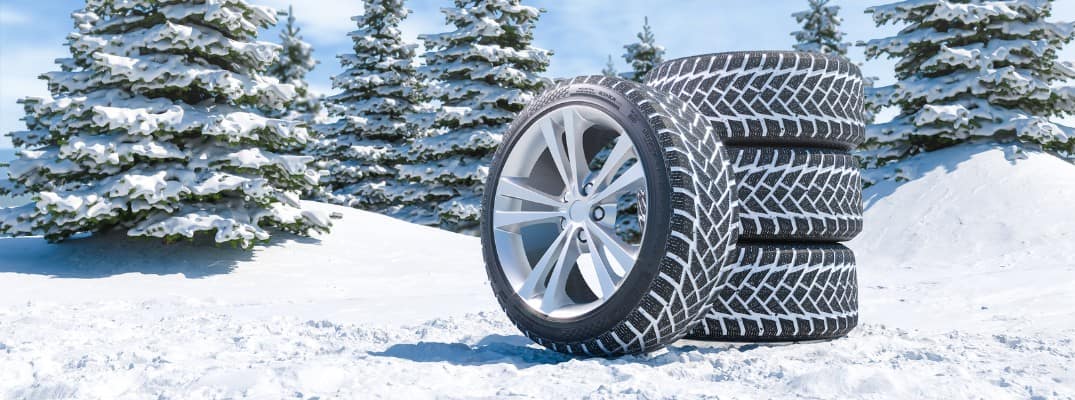
Even though winter tyres Darlington grow more popular in the United Kingdom, many drivers continue to misunderstand their purpose and why they should be in a nation that seldom experiences snow. Winter tyres are for more than just snow and ice. As soon as the external temperature is below 7 degrees Celsius, they are also more grippy and secure than summer tyres in all weather circumstances, even dry ones.
BENEFITS OF WINTER TYRES
Whenever the ambient temperature falls below 7 degrees Celsius, it is appropriate to switch to winter tyres. Temperatures below 7 degrees Celsius cause all-season tyres to become rigid and lose their flexibility. This reduces traction, leading to longer stopping distances and lower steering and cornering capabilities.
Winter tyres can assist minimise stopping distances on roadways that are cold, wet, icy, and covered with snow. Dependent on speed and traffic conditions, the stopping distance of a winter tyre vs an all-season tyre may be up to 25 per cent shorter, or two car lengths.
Winter tyres include silica, a material that keeps the tyre flexible in freezing temperatures and provides superior traction and stopping power on slick pavement. Silica retains its qualities at low temperatures, which aids in maintaining traction on roadways covered with snow and ice.
All-season tyres include much fewer sipes than winter tyres. Sipes are tiny, thin slits formed into the tread’s ribs. They are to enhance the tyre gripping on the moist pavement by increasing the tyre gripping edges. Sipes are particularly useful on terrain that is damp, ice, or coated with snow. Winter tyres include a greater void ratio, which enhances the tyre’s capacity to conduct water and snow away from the tread. The void ratio is the proportion of free space in the tread as a proportion of the total tread area.
STORAGE OF WINTER TYRES
To keep the rubber from deteriorating, winter tyres should be present in a cold, dry location, piling on top of each other and away from direct sunshine and heat sources. When removing the winter tyres, you should label each component so that when you reinstall them, you may rotate their places to equal out the pace of wear. The home’s shed or gardening shed might work well. Additionally, you must wash the winter tyres with warm water and gently dry them before storing them.
WINTER TYRES VS ALL-SEASON TYRES
Examining the distinction between the two:
The setting.
Regarding winter tyres, each nation has its own rules. In certain cases, the specific tyre is essential, although, in others, it would be prudent to pick. For instance, if you reside in India or the United Kingdom, where temperatures are often moderate, you may choose all-season tyres. Therefore, the first thing you must do is determine whether or not winter tyres have requirements in your nation.
The yearly mileage average of your vehicle.
Optimally, you should choose all-season tyres if your residence is within the region, the winters are mild, and you do not need to travel throughout the winter. All-weather tyres or all-season tyres are hassle-free and economical, saving the automobile owner a significant amount of money.
The local climate conditions.
Whenever you purchase a certain kind of tyre, you must verify what the local rules say about it. For instance, if your local legislation advises but does not mandate winter tyres. Then you might consider purchasing the greatest all-weather tyres. Winter tyres are appropriate for temps below 7 degrees Celsius, but not during the remainder of the year.
THE PRICE OF WINTER TYRES
The car’s tyres are an essential component often disregard until anything goes wrong. Buying tyres is often not enjoyable and may be costly. Therefore, the idea of purchasing an additional combo of tyres may seem daunting. Nevertheless, after you install winter tyres on your vehicle, you’ll wonder why you didn’t do it earlier. A pair of quality winter tyres may cost as much as $1,000. If you choose to purchase particular rims for these tyres, the price will increase. Remember that the wheels are a one-time investment that will last the lifetime of your vehicle.
THINGS TO REMEMBER
On an ice road, a vehicle travelling at 20 mph in equipment with winter tyres will stop around 11 metres shorter than the identical vehicle equipped with conventional summer tyres — that’s 3 cars ahead!
Winter tyres will not only allow you to stop more quickly, but they will also enhance the general stability and handling of your vehicle, which is vital for staying secure on the road this winter, given that around 48% of winter fatalities are due to sliding. The winter weather in Britain is less unpredictable than we believe.
Did you know that the United Kingdom often experiences ground frost beginning in mid-October for almost half the winter? Each winter, in general, they get at least 5 – 10 days of snowfall. Nonetheless, at all road conditions below 7 °C, the use of winter tyres will substantially increase safety.
Winter tyres often have a lower speed restriction than summer tyres. With winter tyres, it will continue to surpass the UK speed limit, so users won’t have to bother about travelling more slowly. If you do want to push the pedal to the metal, you will have superior traction and be much better with winter tyres.
